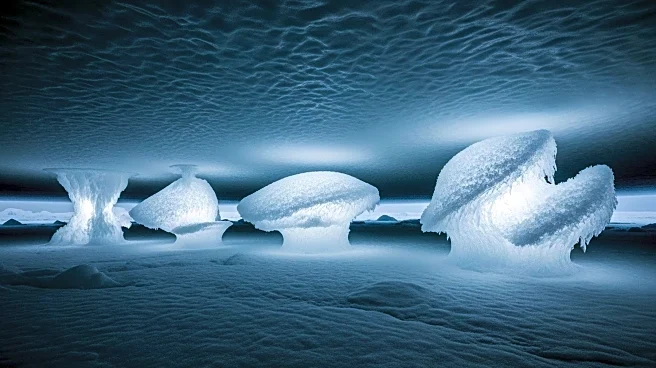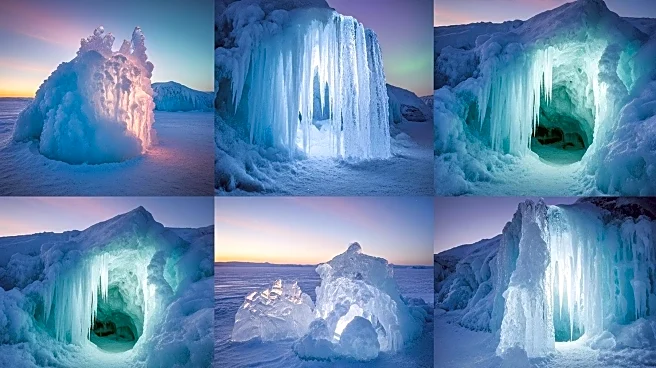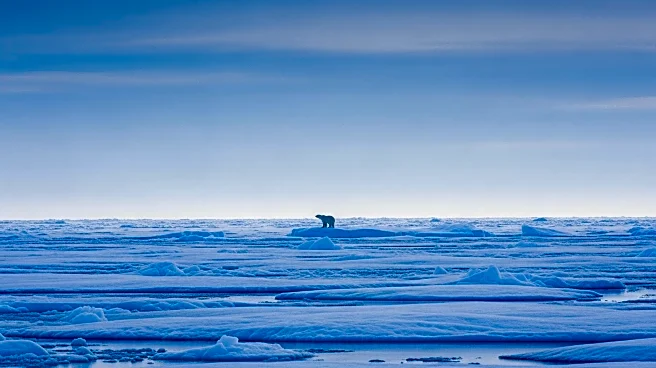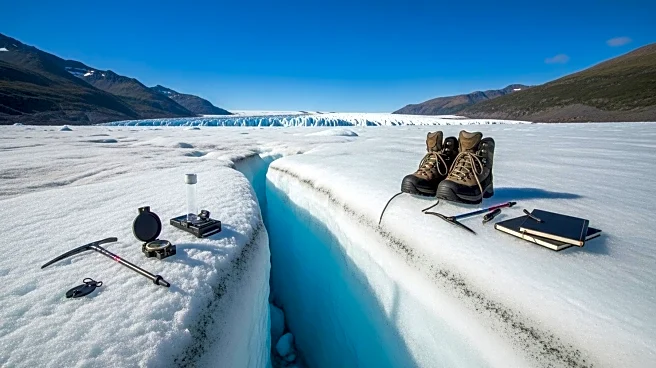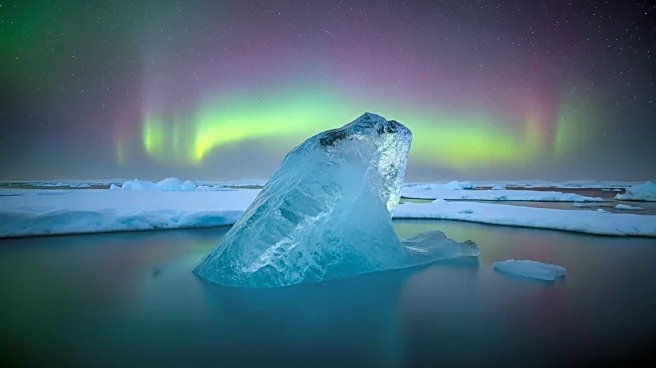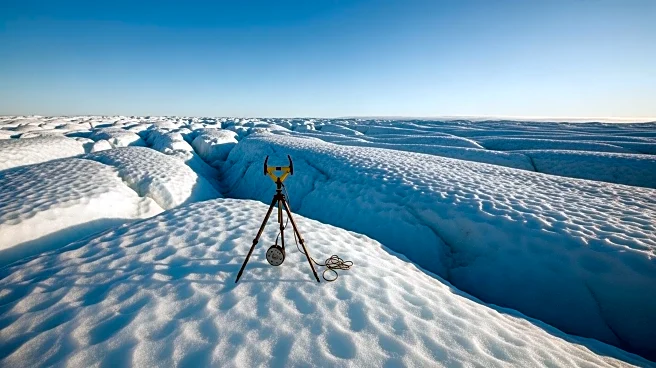What's Happening?
Scientists have uncovered large structures beneath the Dotson Ice Shelf in West Antarctica, revealing a complex underworld shaped by ocean currents. Using a robotic submersible named Ran, researchers mapped approximately 140 km² of the ice underside, discovering ridges, channels, and teardrop-shaped formations. These features are believed to be sculpted by ocean currents and heat, providing new insights into how ice shelves melt. The data collected by Ran, which includes high-resolution sonar images and ocean measurements, is crucial for understanding the dynamics of ice shelf thinning and its impact on sea-level rise.
Why It's Important?
The discovery of these structures is significant as it provides a deeper understanding of the processes that contribute to ice shelf melting. Ice shelves act as barriers for inland glaciers, and their weakening can lead to accelerated glacier movement, contributing to sea-level rise. The data from Ran highlights the role of modified Circumpolar Deep Water in driving uneven heat distribution beneath the ice, which is crucial for refining sea-level rise predictions. As global sea levels are projected to rise significantly by 2100, incorporating these findings into climate models is essential for accurate forecasting.
What's Next?
Future research will focus on tracking the evolution of these structures over time to better understand their impact on ice shelf dynamics. Next-generation submersibles are expected to continue exploring these underwater formations, providing more detailed data to improve ice-ocean models. The scientific community is keen to integrate these findings into broader climate studies to enhance predictions of Antarctica's contribution to global sea-level rise.

